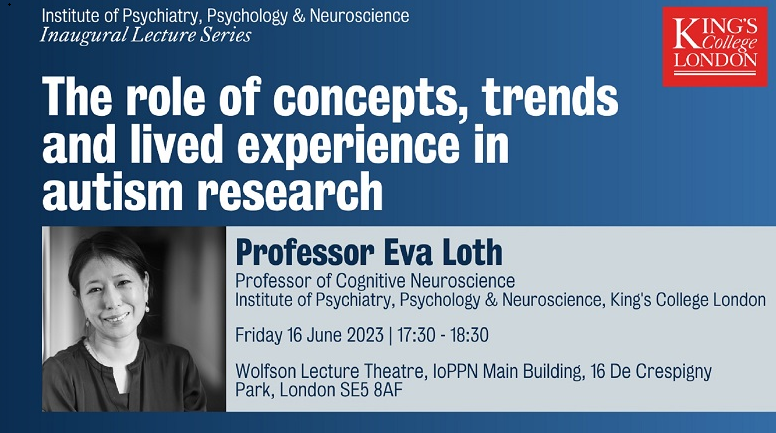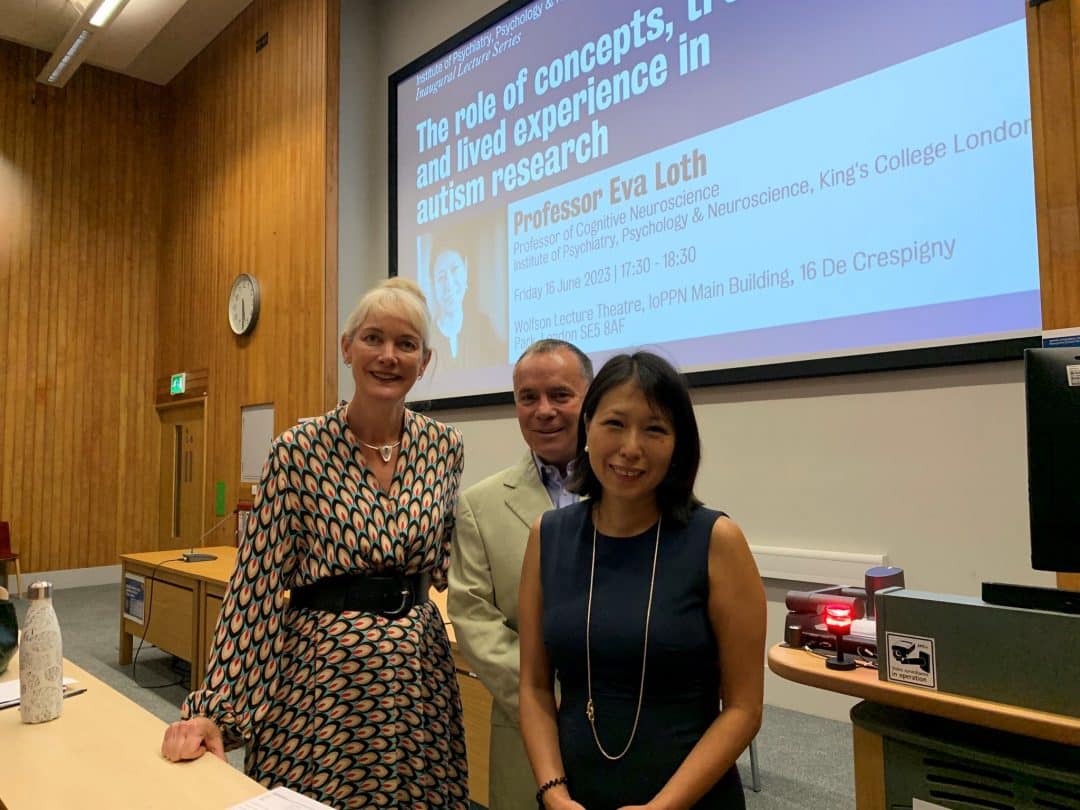Eva Loth becomes professor of Cognitive Neuroscience at King's Colleage London. On 16th June 2023, Eva Loth, gave her inaugural lecture as professor of Cognitive Neuroscience at the Institute of Psychiatry, Psychology and Neuroscience at King's Colleage London...
Pre-pragmatic language use in toddlerhood: Developmental antecedents, aetiological factors, and associations to autism
Rudling M, Portugal AM, Bölte S, Falck-Ytter T.
JCPP Adv. 2023 Jan 11;3(1):e12135. doi: 10.1002/jcv2.12135. eCollection 2023 Mar.
ABSTRACT
BACKGROUND: Pragmatic language is key for adaptive communication, but often compromised in neurodevelopmental conditions such as autism spectrum disorder (ASD). Decontextualized language-to talk about events and things beyond here and now-develops early in childhood and can be seen as a pre-pragmatic ability. Little is known about the factors that contribute to decontextualized language use in toddlers and whether these are different from factors contributing to general language development.
METHODS: We studied longitudinal associations between parent-rated core language and non-verbal socio-communicative abilities at 14 months of age, and decontextualized language use at 24 months of age in children with typical and elevated likelihood of ASD (total N = 303). Using twin modelling, we also investigated genetic and environmental contributions on decontextualized language and grammar use in two-year-old twin pairs (total N = 374).
RESULTS: Core language ability was a strong predictor of later decontextualized language use in both children with and without an elevated likelihood of ASD. In contrast, social communication was only a significant predictor of decontextualized language use for children with low levels of core language. This pattern was specific to decontextualized language, and not replicated in prediction of concurrent grammatical ability. Further, there was a large genetic influence on decontextualized language at 2 years of age, which mostly overlapped with the genetic influences on grammatical ability. Shared environment influences were significant for grammatical ability, but not found on decontextualized language. In children with an elevated likelihood of ASD, decontextualized language use was negatively associated with autistic symptoms.
CONCLUSIONS: This study suggests that decontextualized language is developmentally associated with, yet dissociable from, more general language development measured as grammatical ability. Already at 2 years of age, parental ratings of decontextualized language is associated to clinician-rated symptoms of ASD.
PMID:37431312 | PMC:PMC10241459 | DOI:10.1002/jcv2.12135





